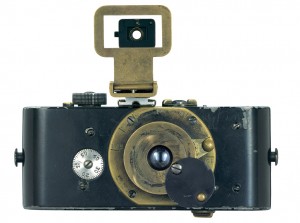While adding those perfect holiday gift items into your Amazon.com shopping cart keep this in mind… all of the patents behind the magic. Here are 10 slightly creepy patents you might come across with your next online purchase, all owned by Amazon. Enjoy!
Continue reading “Amazon’s Holiday Shopping Patents, Creepy?”

Category: A Moment in History
Well, for starters, we know he was a SWSM from France. Yes, SWSM stands for “single, white, straight male” whose occupation is listed as an inventor and photographer.
Born on November 18,1787, Louis-Jacques-Mandé Daguerre is best known for inventing the Daguerreotype. A form of photography and a process which was “a one-of-a-kind image on a highly polished, silver-plated sheet of copper,” according to www.metmuseum.org.
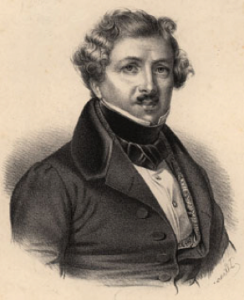
Louis-Jacques-Mandé Daguerre
In addition, “… it was sensitized with iodine vapors, exposed in a large box camera, developed in mercury fumes, and stabilized (or fixed) with salt water or “hypo” (sodium thiosulphate).”
And although Daguerre was required to reveal certain details involving the process, “he wisely retained the patent on the equipment necessary to practice the new art.”
However, “Daguerre’s invention did not spring to life fully grown, although in 1839 it may have seemed that way.
Continue reading “The Invention of Daguerreotype Photography”
According to livescience.com the top ten inventions which changed the world are: the wheel, the nail, the compass, the printing press, the internal combustion engine, the telephone, the lightbulb, Penicillin, contraceptives, and, the internet.
Amazing feats that they were and long before the smartphone was created (that combined the telephone with the internet that almost pushed the printing press into obscurity), Oskar Barnack invented something else that almost no one would ever need again: the 35mm camera.
Continue reading “Will We Ever Need It Again?”
Ok, c’mon, let’s face it, we’ve all taken a walk on the wild side and made a copy of our hands, feet and faces. (ok, gasp!, our derrieres too?) However, long before it was possible to climb upon the glass exposing our … uh, well, the first demonstration occurred in 1938.
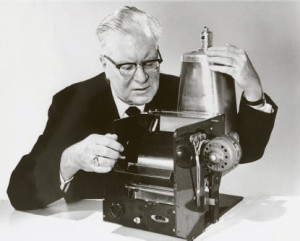 October 22 marks the day in 1938 when physicist Chester Carlson introduced his invention of the xerographic process. However, for as much as we depend on the process now-a-days and likely could not imagine life without a copy machine, Chester’s idea didn’t always delight.
October 22 marks the day in 1938 when physicist Chester Carlson introduced his invention of the xerographic process. However, for as much as we depend on the process now-a-days and likely could not imagine life without a copy machine, Chester’s idea didn’t always delight.
Carlson’s ingenuity, which launched what is today a multi-billion dollar industry didn’t fare well at first: “for several years after patenting his process, Carlson could find no company interested in xerography. It was the invention that nobody wanted,” said aps.org. Continue reading “Today Xerography Was First Demonstrated”
Inventors take heed and hear this:
“The smallest features of modern life are stealth inventions. Their ingenuity is quiet. Their advantages are imperceptible. But they are inventions.” – theatlantic.com
Therefore, if curiosity killed the cat and ‘how the straw bent’ sounds like the prelude to a problem, then a quick search can save the day.
Yes, the next time the kids (or anyone) sticks straws up their noses tempting anyone to wonder “who in the heck invented straws?” (not to mention why anyone would stick a straw up their nose)
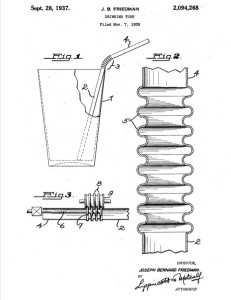
The First Bend Straw – US Patent 2,094,268
At least there’s this closure:
Meet Joseph Friedman, the man who made sipping simpler. (and probably never intended for his invention to wind up protruding from a nose)
Born October 9, 1900, Friedman would himself wind up with something: nine patents.
To his credit, the man had some great ideas, but, the one he was best known for turned an idea into a multi-million dollar business.
Armed with an education (optometry) and real estate skills, Friedman often moonlighted as an inventor: tinkering around with ideas to try and make things better. Continue reading “The Bend Straw Inventor”
Long before a rapper delighted television audiences with his wizardry and spray paint, Henry Ford put the world on wheels.
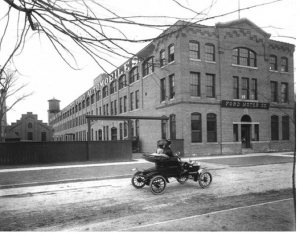
It was September 27, 1908 … and a Model T was born.
A Piquette Avenue manufacturing plant in Detroit, Michigan was the birthplace of the Ford’s first Model T. Business started off slow but demand developed quickly. After an initial first trickle (eleven cars total) 12,000 Model T’s would later be rolled out and prior to a new plan: Production was moving to a new place in Highland Park, Michigan.
There, over 15 million more “Tin Lizzies” were made until production ceased in 1927. Wildly popular, consumers took to customizing the inexpensive, light weight, easy-to-repair ride for five.
Continue reading “Henry Ford Put The World On Wheels”
This week we celebrate the birth of a man whose life legacy can be summed up simply with the word sweet. The man who made milk chocolate his own was born September 13, 1857.
It’s a story of success and one that didn’t come easy, but, for Milton S. Hershey, the hardships were part of the journey that led to the destination we now know as Chocolate Town, USA, Hershey Park, Hotel Hershey, Hershey Sports arena and of course, Hershey’s chocolate.
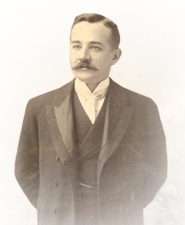
Milton S. Hershey – thehersheycompany.com
Born on a farm in Derry Township located in central Pennsylvania, Milton Snavely Hershey would become a shrewd business man but with a big heart who would put his chocolate fortune to good use.
Not only would he have a chocolate bar named after him, he would become the founder of “the sweetest place on earth” and Hershey Industrial School for orphan boys.
But first, failure.
Hershey, however, was determined, ambitious and persistent.
Continue reading “The Man Who Made Milk Chocolate”
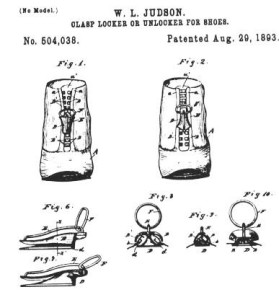 The zipper as we know it, evolved from the “clasp-locker” patented by Whitcomb L. Judson on August 29, 1893.
The zipper as we know it, evolved from the “clasp-locker” patented by Whitcomb L. Judson on August 29, 1893.
Judson was an inventor born in Chicago, Illinois on March 7, 1846. He was awarded 16 patents throughout his thirty year career with his most noteworthy invention being the chain lock fastener for shoes and other articles of importance such as clothing or mailbags.
One look though at Judson’s idea for the clasp-lock and the first thought that comes to mind might be “cumbersome” or more aptly and modernly put “a pain in the butt”.
Continue reading “The Zipper As We Know It”
No matter what tone, language, with a smile, as a demand, or in curious anticipation, the standard salutation for answering the telephone has been “Hello” since 1877.
Although he didn’t invent the telephone or receive a patent for the word, history has it August 15, 1877 marks the date Thomas Edison first gets credit for how we greet after a call is connected.
Word according to wired.com is that “Hello” was entered into the dictionary by 1883.
Continue reading “Hola, Hallo, Hi, Hey, Salut and Shalom”
Why don’t we just celebrate all year long?
Once upon a time, August was designated as National Inventors Month and then it was changed to May.
Promoting a positive image of inventors and the real contributions they give to this world is a big deal and recognition on a national level with specific time frame set aside for it is certainly awesome.
(Of course, for all other recognition worthy moments throughout the year, there’s patentplaques.com)
Just what is National Inventors Month?
Continue reading “A Day Late and a Dollar Short”


